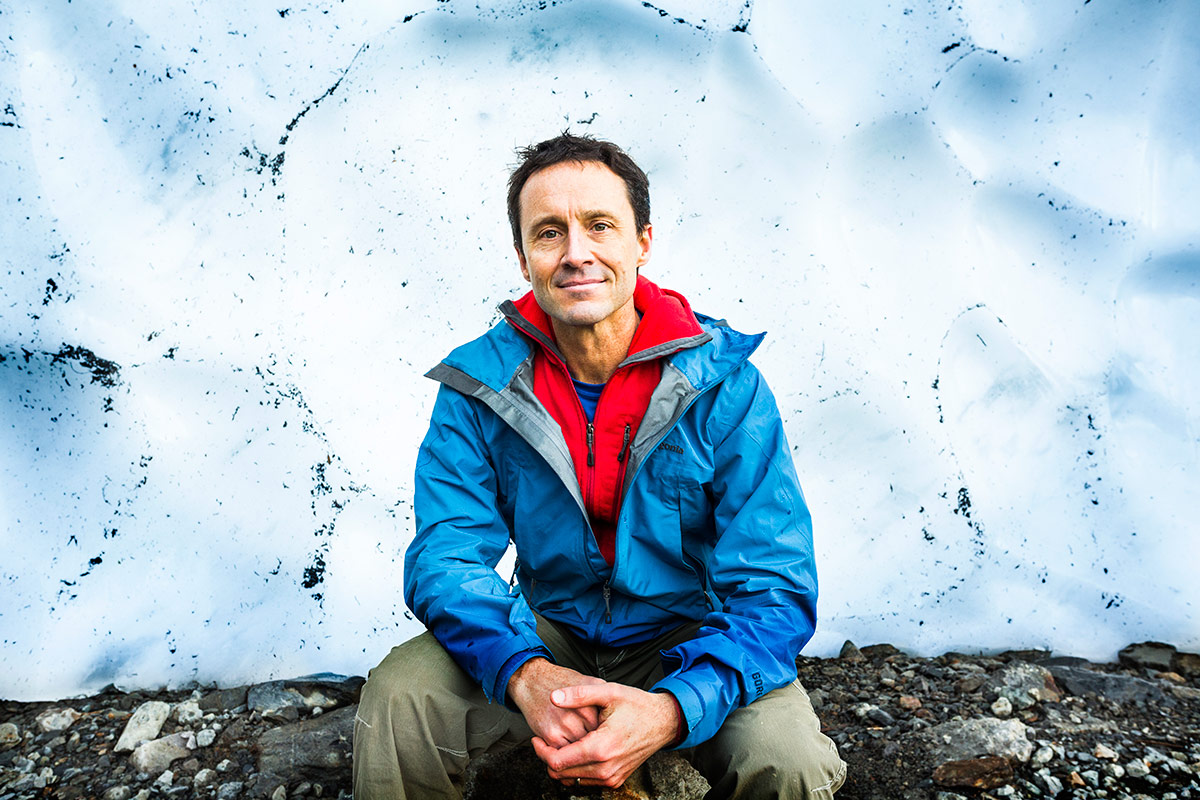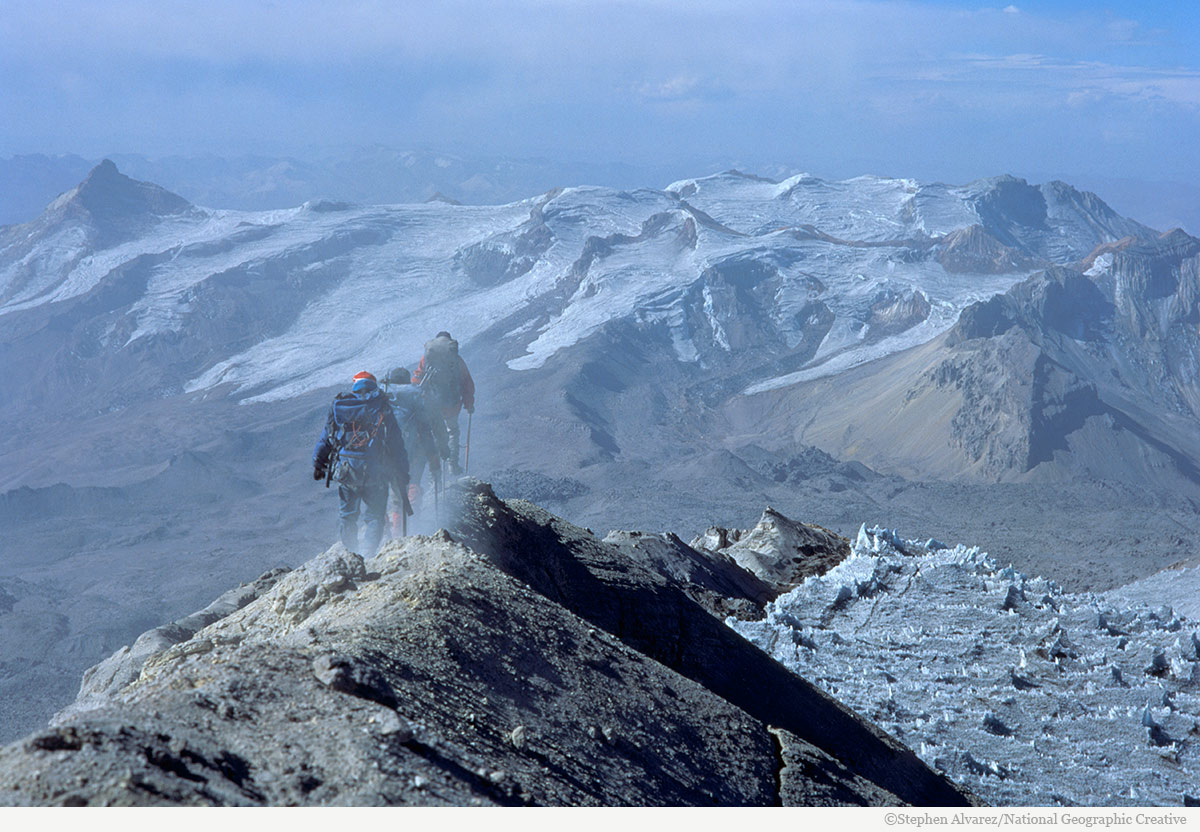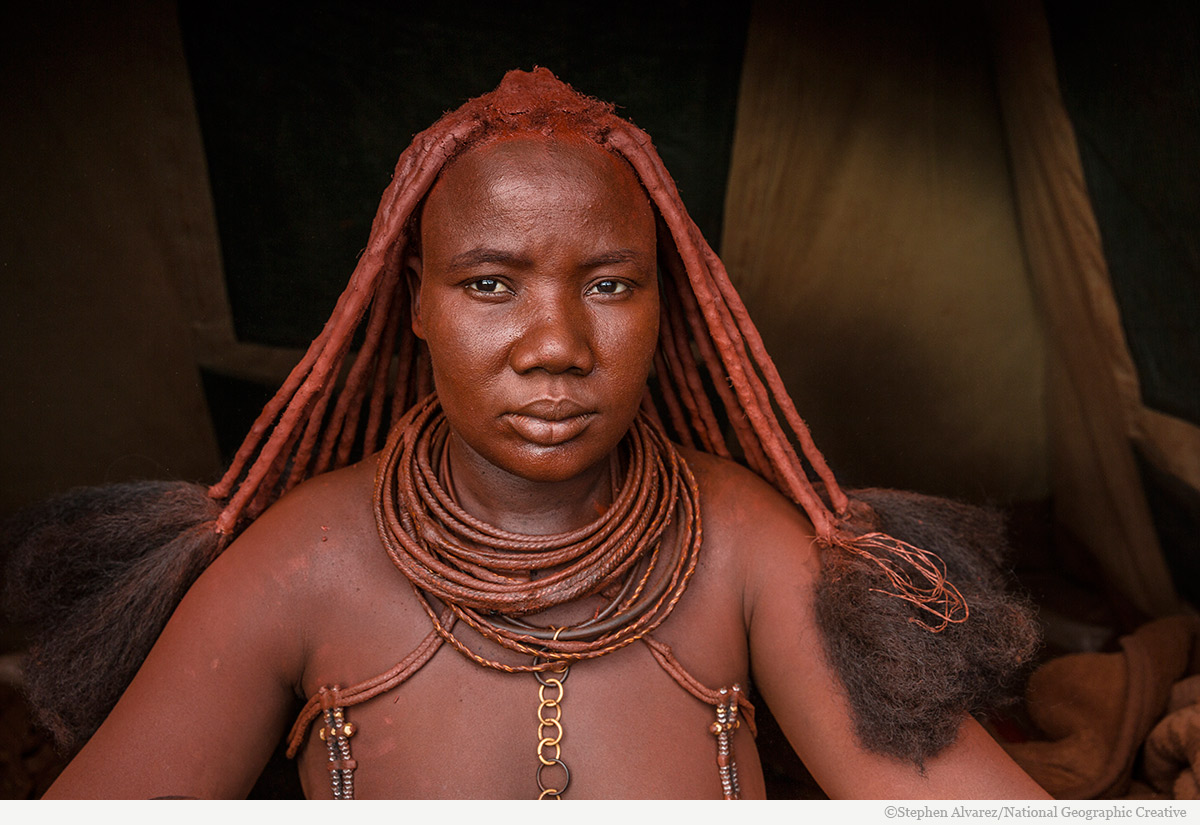Interview: National Geographic Photographer, Stephen Alvarez
Two decades of near-death experiences, changing technology and the creative process that emerges

Few people know about the power of image-making as well as a National Geographic photographer. While the final photographs published in the glossy pages of the yellow-bordered magazine speak a thousand, powerful words, the people behind the lens are often more elusive. We had the pleasure of interviewing Stephen Alvarez, who’s been working (or, survived working) for National Geographic since 1995, and are sure his job—hands-down—wins any Career Day. We were fortunate enough to meet the expedition photographer on a recent trip to Alaska through Microsoft, where he served as an ambassador. (Keep an eye out as he’s on assignment from Nat Geo to capture the Seven Natural Wonders of the World on the Lumia camera phone—with only the Great Barrier Reef and Aurora Borealis left to tackle.)
Whether at home in Sewanee, Tennessee snapping photos on a cellphone to traveling to places no other human being has ever been (i.e. the remote river caves in Papua New Guinea the size of cathedrals), Alvarez’s approach to visual storytelling and communication inspires a connection—be it to the earth, to our people, to our history, to our future, to our present.

How did it all start out of Tennessee?
I got into photography because I always felt like I was inarticulate. And someone [a professor of mine] put a camera in my hand when I was in college and I went from being a fairly inarticulate person to being able to say anything I wanted to say. So my degree is in Comparative Religion, but I always knew I was going to be a photographer.
I love telling stories with images and putting images together. And I became a magazine photographer, and for a while, I was the guy in the south the New York magazines would call to go shoot portraits. But I always wanted to do more with it. I would go to see National Geographic and at the time, if they liked you, they’d go, “Well this is great! Come back in six months.” And what that means is, in six months, come back with another set of pictures. This process goes on for a while—and they finally had a story they thought I could do. It required climbing a very tall mountain in Peru and taking pictures of artifacts. It was going to be really dangerous, and they didn’t want to hire someone they knew well because if they died, they didn’t want to feel bad [laughs].

So how was Peru?
I had already been there a lot that year. It was great. We climbed a mountain called Ampato, and I went from sea level to 19,000 feet in about four days—and I went blind, in my left eye. The thing is, I was young—this was 20 years ago, so I was 30—and all I wanted to do was work for National Geographic magazine. I remember laying in my tent at 19,000 feet, staring at the ceiling of the tent, wondering if I was truly going blind or not (and I was). But I kept thinking, if I tell anyone about this, they’ll make me come down off this mountain and I’ll never work for Geographic again.
I shoot with my right eye but it was my left eye that was going dark; it’s a sign—”It’s fine!” It eventually went away—it was a burst blood vessel. It wasn’t until later, we were up high for weeks on end, we finally got back to Arequipa and I told David Breashears about it. David’s a high-altitude filmmaker who’s climbed Everest like 15 times; incredibly strong guy, lots of high altitude experience—and he said, “Um, you really should have said something because those things kill people dead.” [laughs]

Up until the point we almost died, it was the coolest thing I’ve ever done.
Was your second assignment a little safer?
Ahhhh, not really. [laughs] I almost drowned in a river my second assignment. I covered adventure and exploration, so I was on a cave expedition in Borneo, in southeast Asia, and again, had done something fairly stupid. We had hiked to this cave to check it out, and it was getting dark. And we thought, well there’s a river here and the river goes by our base camp… so naturally, the thing to would be jump in the river and let the river carry us back—great idea, right? Well, it was raining! Up until the point we almost died, it was the coolest thing I’ve ever done. Because you’re swimming in this river in Borneo, just your eyes are out of the water, all this rain coming down, everything’s warm.
But the water level came up, and we went over this rapid. By this point, it’s dark out and you’ve got a headlamp on and you’re trying to see—and I got forced underwater for so long that I thought, I cannot believe this is how I’m going to die. I eventually made it back up—only to watch my assistant Neeld do the same thing and go under: “Great! Now I’ve just killed Neeld.” So we make it out of that, decide we can’t follow the river back and spend the next eight hours lost in the jungle in this rainstorm. We finally get back to camp and I get in my little sleeping bag. I wake up in the morning and, the sheet’s soaked with blood—just soaked, soaked, soaked with blood. What had happened was that we had so many leeches on our legs and were too tired to pick ’em off. It was horrible, horrible.

It really makes you look forward to the next one, doesn’t it? How has the gear that you’ve taken with you changed over the past 20 years?
It’s dramatically different. The digital revolution is huge. I first started my career shooting film. In retrospect, I don’t know how I ever got anything done because my “fast film” used to be ISO 100; and you only have 36 exposures on a roll. And now when I’m shooting, if there’s only a hundred frames left I go ahead and change the card. So I don’t know how I really got anything accomplished. But there was something about film that was wonderful because you never really knew if you had the shot. So you were always working out of this position of anxiety, and it made you work a different way.
And there’s that anticipation about what it looks like when you get home.
Right, and then you have to send the film off to be processed and it comes back. You have this big separation between when you shot the picture and when you actually look at it. And that’s gone now because you have the immediate feedback—that makes you get attached to pictures you shouldn’t be attached to, but that’s how it is.

Are you always keeping an eye out for what’s new on the camera market?
It’s a real tech-heavy business and you want to be on the leading edge of what’s possible. And that’s why I like the phone space because the cameras in the telephones are getting better by leaps and bounds. In all of the big innovations in imaging are happening in phones. I shoot with my cellphone so much now that it’s kind of funny going back to the camera because it’s a really different experience. They do feel so big.

What is the process like for pitching photo essay ideas and bringing them to reality?
For “Origins of Art,” I walked into a cave in southern France, saw 14,000-year-old art on the wall and I realized we had been cognitively people a lot longer than I thought. So that made me ask the question, well, when did we become people? What’s the first evidence of modern thought? And it was tracking that idea down that led to “Origins of Art.” When I get an idea like that I see if it keeps my interest for a while. I start the research process and if I’m still interested in it at the end of research, there’s probably a photo essay there. We published it in January and usually at the end of a National Geographic story, I’m ready to leave the subject behind; I feel like I’ve explored the subject fully. With “Art,” I would keep working on this until I grew old and died.
What did the series cover?
The very first evidence of symbolic behavior—people are painting, writing things down—[comes] from the southern coast of Africa, so we worked with some archeological sites there, where 130,000 years ago people are making paint. Then are other sites there, where [people] begin inscribing things 77,000 years ago. And this is in a time where there are 10,000 people on the planet. There’s nobody! Just little groups, twenty or thirty people, living a couple of hundred kilometers apart. And what they do is they start writing things down, just making symbols, and that gives something to trade so they can work out cooperation between groups. And we’re the only species that has ever done this. There have been other hominids with the same cranial capacity that were certainly smart enough to do it—but they never did. So they never could accumulate information over time.
Our whole thing here rests on retaining knowledge. I always think we’re doing well at Geographic when we do stories about what unites us, rather than what separates us. Conflict stories are one thing; that’s reporting and it needs to be done, but there’s also a lot that unites us.

When working on a series, how do you determine which shots make it into the feature?
At Geographic, you send every last thing. On “Origins of Art,” I shot 25,000 photographs. And so I send all that to the magazine and I have copies. So I’ve got an editor there and I’m at home. And I go through the 25,000 pictures and I make my first selects. You go as you shoot and I shot that story over the course of two years. You and your editor combine those two catalogs, so you’ve gone from 25,000 to about 2,000. So you’ve got all the pictures that are good. From there, that’s when things get ugly. Because you’ve got to make some tough decisions about what moves the story forward and what you’re trying to say. I shot 25,000 pictures; we published 12. There’s a lot of stuff that has to be left by the side; it’s painful. There are images that I loved shooting on the story, but just didn’t make sense.
No one really talks about that part of photography as much.
Photography is a lot about leaving what you don’t show. That’s as much as anything.
What’s the post-production process like?
It’s very electronic. I shoot in RAW, National Geographic does the conversions and I approve them; we do them in Photoshop. There’s no manipulation that goes on; we don’t move elements in the pictures. We tune the image to match what I saw.

I spoke with an artist about how people now see hundreds of photos of, for example, the Grand Canyon—in incredible, clearly enhanced lighting—online before ever stepping foot in it. And then becoming disappointed when they do visit for the first time. How do you balance between what you see and making it as dramatic and beautiful like a standalone artwork?
Photography is much about feeling as much as anything—it’s about how a place feels. For me, as a Geographic photographer, I need to be there at the time it looks like how it feels, rather than trying to take an image in bad light and in production, make it look better. I would spend a long time waiting for the light to be right, and that’s mostly an aesthetic decision.
But yeah, this ubiquitous access to imaging is changing the way we perceive the world. Because up until a few years ago, most people couldn’t take a photograph. Really, truly. We made a trillion photographs last year.
What are your thoughts on Instagram?
I love Instagram because I love that access to the audience and I like the idea that there are however many hundred millions users who are communicating, primarily visually. Because that’s what we’re really built for, that’s what we’ve evolved from: visual communicators. Instagram has really tapped into that in a way that no other social media has, because it is a visual platform. But it’s hard to cut through all the noise of the trillion photographs. And I have colleagues who are very down about it. There was a time that no one could read and then, we all got literate—but that didn’t make storytelling any less important. More people with cameras, making images, won’t make good imaging less important.
It helps having a nice camera, though.
It really does [laughs]. It’s a really exciting time to be a photographer because there are so many people participating in it. It’s more important now to have… a way you see. And to have something to say with your pictures, rather than “This is pretty.” What are you saying?
Follow Stephen Alvarez on his travels through his Instagram account @salvarezphoto
Portrait courtesy of Brian Smale; all other images ©Stephen Alvarez/National Geographic Creative












